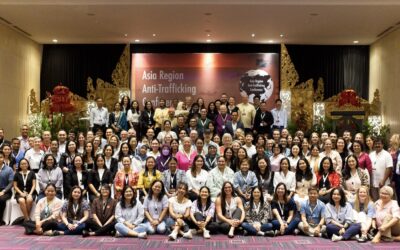Google the term “M&E” and you’ll discover it means different things to different people. If you’re a builder, it means mechanical & electrical. If you’re an accountant, it means meals & entertainment. If you’re a filmmaker it means music & effects. And if you’re a philosopher, it means metaphysics and epistemology.
For abolitionists, M&E means monitoring and evaluation – and it’s a vital activity at Free the Slaves. It helps improve anti-slavery programs over time and demonstrate that they’re having an impact.
During my time at Free the Slaves, I worked to build the capacity of our front-line partner organizations to monitor and evaluate their work. It can be quite a challenge. For many, formal M&E methods are unfamiliar. In the border regions of Nepal, we had an opportunity to train local activists who are new to combating slavery. I had a chance to witness how our new M&E techniques would work in new communities.
When we arrived in one of these new communities, after a beautiful but bumpy ride through the curvaceous hills of rural Nepal, a handful of women spoke openly with us. But there were lots of other men, women, and children watching and listening from the sidelines. Since they had never had discussions about slavery, we had to be careful about the words we used and how we approached the topic.
Our South Asia director skillfully guided local activists in speaking about such a sensitive subject. Even so, as the discussion got more personal, a few people started to walk away from the group. Many villagers had never thought about slavery and trafficking, so it was difficult to get a clear and detailed picture of the local dynamics. There was a lot of disagreement among different community members.
After the weeklong training, we met with staffers from one of our partner organizations. The activists took us to one of their project communities, where all of the group members were eager to tell us their story. They told us about days when villagers would remain entirely silent, unwilling to even say their names. The husbands would try to stop their wives from meeting. But over time, as the women learned more, they started to take steps to improve their community, and the husbands started to encourage the women to meet. They lowered alcohol abuse in the community and increased school enrollment. They even learned to negotiate with powerful, local entities—such as when they told a phone company that they would only allow a tower to be erected if they were given a bus route that came through their community.
On the other side of the country, near the China border, we met with another one of our partners. Nearby, a huge landslide had recently buried large swaths of the local communities. Because of the schools and jobs that were swept away, these communities were now even more susceptible to slavery. These activists had used Free the Slaves M&E tools to determine which of their communities had eradicated slavery, so they decided to pull their resources away from those “mature” communities in order to provide more support to the communities devastated by the landslide.
During my short time in Nepal, my emotions went through highs, lows, and everything in between, similar to the country’s beautiful landscape. I had seen people struggling to overcome numerous challenges, staying strong and smiling, and some even finally overcoming those challenges to become victorious. The fight to end slavery will be long and hard, but I believe that with the dedicated people and organizations that I met during my year-and-a-half at Free the Slaves, we will.
Editor’s Note: Sujata has recently left Free the Slaves to spend more time with her family. We thank her for the excellent work she’s done in establishing our Monitoring & Evaluation system. Learn more about our M&E approach on our Research, Monitoring and Evaluation webpage.
Photo: Heading back from rural villages where human trafficking is endemic.



